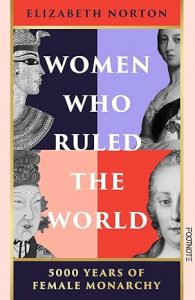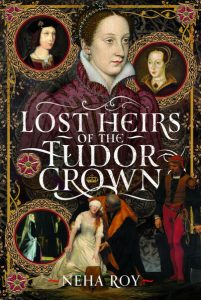Many thanks to Stephan Edwards for letting me post this extract from his book.
‘There is some confusion today concerning the precise date upon which the marriage of Jane Grey and Guildford Dudley was solemnized. Modern references and authors offer a variety of dates or spans of time. The novelist-historian Richard Davey, so influential in shaping the modern narrative of Jane Grey, expressed only uncertainty, placing the ceremony “towards the end of May or the beginning of June.” (1) Amateur historian Hester Chapman supported 25 May, citing Francis Godwin’s Rerum Anglicarum of 1616 as her source, though Godwin actually situated the ceremony in June. (2) David Mathew, an English Roman Catholic Archbishop and historian, believed the wedding to have taken place on 26 April. (3) Then in 1986, the writer Mary Luke confused the issue still further when she stated that the wedding ceremony occurred on 25 May 1553 but erroneously identified the day of the week as Whitsunday itself. (4) Former scriptwriter Alison Plowden followed Chapman’s earlier lead when writing her own first book on Jane Grey and repeated 25 May. (5) But when she revised and re-published that book under a new title to coincide with the 450th anniversary in 2003 of the reign of Queen Jane, Plowden amended the date to “Whitsunday, 21 May,” seemingly conflating Chapman and Luke. (6) Finally, writing in 2009, Leanda de Lisle placed the wedding on 25 May, while Eric Ives, writing at nearly the same time as de Lisle, reiterated Davey’s uncertainty of a century earlier and simply situated the wedding “at Whitsun.” (7)
As is the case with so many other aspects of the life of Jane Grey, the issue of the date of her wedding is best resolved by setting aside the histories written over the past four and a half centuries and returning to the accounts penned by her contemporaries of 1553. Only two truly-contemporary sources (i.e., created within days of the event itself) offer a specific date. (8) Writing on 12 May 1553, the Imperial Ambassador Jehann Schefyve related only that the wedding was scheduled for Whitsuntide, a liturgical festival that might last anywhere from one to three to eight days, depending on local customs. Whitsuntide, or the festival of Pentecost, was and remains a moveable feast, so that its precise annual date is determined relative to that of Easter. In 1553, Whitsunday itself fell on 21 May. As celebrated in the sixteenth century, Whitsuntide typically also extended across Whit-Monday and Whit-Tuesday, but it could last for the entire liturgical octave, an eight-day span (Sunday to Sunday, inclusive). Schefyve stated explicitly in a follow-up letter to the Emperor dated 30 May that the wedding had actually occurred on 25 May, which fell on a Thursday in 1553. Those responsible for editing the modern printed calendar containing Schefyve’s two letters on this subject only created further confusion, however, when they included a footnote stating, “Lord Guilford Dudley and Lady Jane Grey were married on Whit Sunday, May 21st. Lady Catherine Grey’s marriage to Lord Herbert, and Lord Hastings’ to Northumberland’s daughter, Lady Catherine Dudley, took place on May 25th.” (9) Yet an order or warrant survives to support Schefyve’s original account. It was dated Saturday, 20 May 1553 and issued to the Master of the Revels concerning masques to be performed as part of the wedding celebration on “Thursday next,” i.e. 25 May. (10) The warrant explicitly identifies each of the three couples wed on that single day, leaving no room for confusion. We must therefore conclude that Jane Grey and Guildford Dudley were indeed married on Thursday, 25 May 1553.
1. Davey, Nine Days Queen, 232.
2. Chapman, Lady Jane Grey, 81 and n.19; Francis Godwin, Rerum Anglicarum … Annnales (1616), 103: “Hae nuptiae mense Junii Reger graviter aegrotante Londini celebrater sunt” [sic].
3. David Mathew, Lady Jane Grey: The Setting of the Reign (London: Eyre Metheun, 1972), 138.
4. Mary Luke, The Nine Days Queen: A Portrait of Lady Jane Grey (New York: William Morrow and Company, 1986), 229. Though sold as scholarly history, Luke’s work is replete with imagined dialogue and personal emotions expressed by all of the characters, rendering it historical fiction. It is nonetheless still generally accepted as factual.
5. Plowden, Lady Jane Grey and the House of Suffolk (New York: Franklin Watts, 1986), 87. Plowden use of source citations is erratic at best. In this instance, she does not offer a source.
6. Plowden, Lady Jane Grey: Nine Days Queen (Stroud: Sutton Publishing, 2003), 88. Plowden again failed to cite any primary source for the changed date.
7. de Lisle, Sisters, 102. De Lisle states in a footnote that the date is “almost always given as the 21st” ; Ives, Lady Jane Grey, 185.
8.All other available sixteenth-century sources that mention the marriage of Jane Grey were written many months, years, or even decades after the event and offer a wide variety of dates or no date at all.
The French ambassadors, Antoine and Francois de Noailles, do not explicitly mention the marriage, though other sources indicate that the Noailles brothers attended the wedding and were accorded extreme favor during the celebrations that followed. (Ambassades, Book II)
An anonymous Italian eye-witness, probably a member of the Venetian ambassadorial delegation, made note on 24 July 1553 of the wedding but did not give the date on which it had occurred. Lettere di Principi, le quali si scrivono o da principi, o ragionano di principi. Libro Terzo, compiled and edited by Giordano Ziletti (Venice: Appresso Giordano Ziletti, 1577), 221v-225v.
The 1577 edition of Ralph Holinshed’s The Chronicles of England, Scotland, and Ireland (London: John Hunne, 1577), sets the wedding “about the beginning of the month of May.”(“The Holinshed Project”,
Giulio Raviglio Rosso states it occurred on the day of the Feast of the Holy Spirit, another name for Whitsunday. This appears to be chronologically the first source to place the wedding on Whitsunday, 21 May 1553. Historia delle cose occorse nel regno d’Inghilterra, in materia del Duca di Notomberlan dopo la morte di Odoardo VI (Venice, 1558), f.10b.
Girolamo Pollini does not give a date. Historia ecclesiastica delle rivoluzione d’Inghilterra (Rome, 1594), 250.
The earliest writer to attempt a biography of Jane Grey, her former Italian tutor Michelangelo Florio, likewise specified no timing whatsoever for the marriage. Historia de la vita e de la morte de l’Illustrissima Signora Giovanna Graia, gia regina eletta a publicata d’Inghilterra, 1561/2 (Middelburgh, Zeeland: Johan Radermacher, 1607), 35.
English chroniclers writing near or after the end of the sixteenth century sometimes place the wedding in June . See, for example, Francis Godwin, Rerum Anglicarum … Annnales (1616), 103.
9. Jehan Schefyve to the Emperor, 30 May 1553, Calendar of Letters, Despatches, and State Papers … Edward VI and Mary, 45–47.
10. Seventh Report of the Royal Commission on Historical Manuscripts, Part I (London: HMSO, 1879), 608.




































